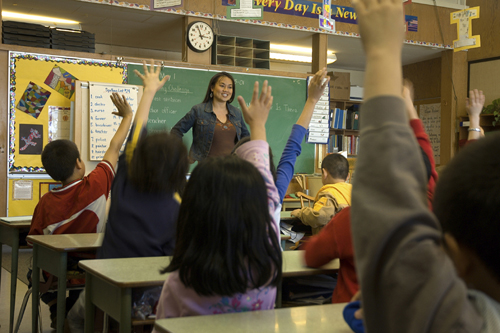
On January 1, 2012, educators nationwide lost an educational icon. Dr. Martin Haberman, long time researcher, educator, writer, and mentor to teachers, passed away in Milwaukee. Dr. Haberman never wavered from his goal. It was to teach school leaders how to implement his research-based models for identifying educators who could serve all students, especially those that live in poverty and are at risk of dropping out of school.
The Haberman Educational Foundation leaders believe that having good teachers and principals is a high stakes endeavor for all children and youth in America, especially for those who are disenfranchised. Good teachers give the 15 million children living in poverty an opportunity to pursue the American dream. Dr. Haberman’s pioneering efforts are highlighted in 300 plus school districts across America.
I asked Delia Stafford, President and co-founder of the Haberman Foundation, how she thought Dr. Haberman would answer these questions:
How do you see the role and impact of teachers in our K-12 education system?
Teachers are hired to ensure that children and youth have an opportunity to reach their potential, which includes high school graduation and college or gaining skills which will ensure that they have a decent life. Dr. Haberman was adamant about this issue.
We all know that teachers cannot control certain key variables, such as parental involvement, the community, churches, or synagogues. And there is little they can do to control the system. However, great teachers never use such barriers or blame the victims as excuses for children failing to meet expectations in school.
Teachers can and should do whatever it takes to help students reach their full potential. This can be done if they are willing to “step outside the box” and make sure their lessons are interesting by providing innovative teaching approaches in the classroom. Good teachers pay close attention to student behaviors, spend time connecting with their students, and never embarrass students in the classroom by making remarks that would hurt their feelings. When the students step inside their classrooms, teachers are responsible and have control to do whatever it takes to ensure learning takes place. Great teachers never seem to lose sight of this mission.
The 2011 Phi Delta Kappa/Gallup Poll – what Americans said about the public schools revealed that 3 of 4 Americans support recruiting high-achieving high school students to become teachers, and the same percentage would encourage the brightest person to become a teacher. Thoughts?
Teaching is a very complex task. High achieving university students are needed and have become an integral part of America’s teaching force. However, teaching is much more than having good grades in certain disciplines. The attributes of star teachers cover many dimensions along with the core beliefs which Dr. Haberman researched and demonstrated over the last 50 years. Core beliefs drive an individual’s behavior, especially when it centers around teaching children and youth. Knowing content, while very important, is not the bottom line for being a great teacher.
Would you agree that encouraging high school and college students to become science and math teachers is as important as encouraging them to become scientists and mathematicians?
Indeed, we do need more math and science teachers. The American public is expressing a marked interest in how educators, both at the local and national level, should increase interest in both areas. This has been a priority for a number of years now. At the public school level, there is a shortage of great math and science teachers that students need to succeed in these areas. With the spotlight on finding more teachers in these areas, I believe that more qualified candidates will emerge.

How will the objective of finding great teachers be achieved?
For the last 16 years at the Haberman Educational Foundation, we have traveled to 300 plus districts to train school leaders to use Dr. Haberman’s Star Teacher/Star Principal Interviews. For those school leaders that hold to the standard of our selection protocols, they have changed the culture of hiring, increased student achievement, decreased dropout rates, and improved teacher retention. The interviews also provide a platform for turning down nice people who should not be teaching or leading a school.
This dilemma has always been an issue for education: if you think you want to teach or lead, all you must do is get a certificate and you become eligible for hire. We know that it is an absolute must that selection be considered first in order for schools to provide the education that is so deserved by the children. For the most part, every program that comes along, good or otherwise, will not work if you don’t have the right people in place to do the job. School leaders make all decisions regarding what initiatives will be used in public schools, including training for each district. The Haberman Star Teacher/Principal Selection training programs are both viewed as initiatives. We would prefer a mandate!
Does the ability to teach come more from natural talent or from training?
Rather than “natural talent,” we always refer to an individual’s core beliefs. Teachers come with certain beliefs, and generally beliefs are not easily changed. If I believe, as a teacher, that it is my responsibility to ensure learning, it generally takes place. If my belief is that I am here to teach those who want to learn, that could ensure that no one learns. Research tells us 7,000 students drop out of schools every day in America and many say they left because they believed no one cared if they were in school or not! If a teaching certificate made a great teacher, the problem might be solved. Our schools will never be any better than the teachers who serve the students.
What has to be done to improve the quality of teachers in high poverty schools?
In a word, better selection. Dr. Haberman researched this issue for 50 years. He interviewed 5,000 of the best teachers he could find and used their ideology and beliefs to craft the questions for his Star Teacher interview process. The interview is used in over 300 school districts and universities. We can note a candidate’s grades, read reference letters, view a teaching demonstration, or read about their experiences in a student teaching classroom. What we don’t know is what the person really believes about the work of a great teacher and what he or she thinks the job is going to be, especially at hard to staff schools. Dr. Haberman’s research enables the prediction of what teacher applicants would likely do, given the opportunity to stand in front of children and youth. School systems large and small, from urban to rural, are enjoying greater student achievement, better morale, and fewer teacher turnovers as a result of improved teacher selection.
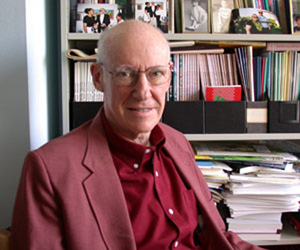
Should teacher salaries be based on multiple factors including advanced degrees, experience, and the principal’s evaluation of the teacher? How could this be implemented nationally?
Solving this issue could impact education for the children and youth of America. This question has been around for many years. However, it could take forever to have unions, state departments of education, universities, local school leaders, school boards, teachers, principals, and superintendents agree. An advanced degree, such as a master’s in education, does not necessarily improve teaching or learning; it does however increase salaries. Very few teachers are dismissed after an unacceptable evaluation. Years of experience may not ensure great teachers. I have yet to see a national standard that would be amenable to all who are involved in this very complicated issue in our schools. We have 15,000 school districts in America; getting a unanimous vote would be beyond rare.
In dysfunctional schools, what separates the star teacher from the ineffective teacher?
Great teachers will survive the problems of dysfunctional school systems and spend time concentrating on what can be done for the students. A great teacher is one who works with parents and provides information that is in the best interest of every student. A great teacher will increase students’ social skills by demonstrating respect and connecting with students while working towards improving their social and behavioral skills as needed. A great teacher works toward helping all students to have an opportunity to learn as much as possible, while the ineffective teacher may do little or nothing except try to keep the job.
Can we impact the quality of teaching without addressing the other fundamental issues?
I believe we can impact quality if we find and select teachers and principals who have the beliefs discussed in the research by Dr. Martin Haberman. I further believe there is no time to waste. Schooling for the poor and disenfranchised, those who are deemed at risk of failing and dropping out of schools, “is a matter of life and death,” as the good doctor said. We know, as always, he was rarely if ever wrong in his assumptions.
http://www.habermanfoundation.org
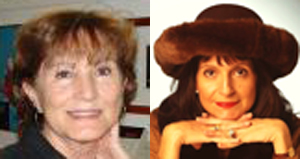
Photos courtesy of the Haberman Educational Foundation, Inc.
In The Global Search for Education, join me and globally renowned thought leaders including Sir Michael Barber (UK), Dr. Michael Block (US), Dr. Leon Botstein (US), Dr. Linda Darling-Hammond (US), Dr. Madhav Chavan (India), Professor Michael Fullan (Canada), Professor Howard Gardner (US), Professor Yvonne Hellman (The Netherlands), Professor Kristin Helstad (Norway), Jean Hendrickson (US), Professor Rose Hipkins (New Zealand), Professor Cornelia Hoogland (Canada), Mme. Chantal Kaufmann (Belgium), Professor Dominique Lafontaine (Belgium), Professor Hugh Lauder (UK), Professor Ben Levin (Canada), Professor Barry McGaw (Australia), Professor R. Natarajan (India), Dr. Denise Pope (US), Sridhar Rajagopalan (India), Dr. Diane Ravitch (US), Sir Ken Robinson (UK), Professor Pasi Sahlberg (Finland), Andreas Schleicher (PISA, OECD), Dr. Anthony Seldon (UK), Dr. David Shaffer (US), Dr. Kirsten Sivesind (Norway), Chancellor Stephen Spahn (US), Yves Theze (Lycee Francais US), Professor Charles Ungerleider (Canada), Professor Tony Wagner (US), Professor Dylan Wiliam (UK), Dr. Mark Wormald (UK), Professor Theo Wubbels (The Netherlands), Professor Michael Young (UK), and Professor Minxuan Zhang (China) as they explore the big picture education questions that all nations face today. The Global Search for Education Community Page
C. M. Rubin is the author of two widely read online series for which she received a 2011 Upton Sinclair award, “The Global Search for Education” and “How Will We Read?” She is also the author of three bestselling books, including The Real Alice in Wonderland.


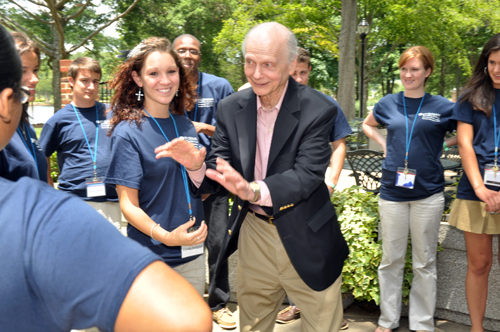
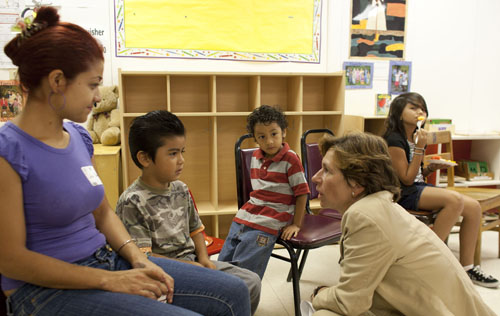

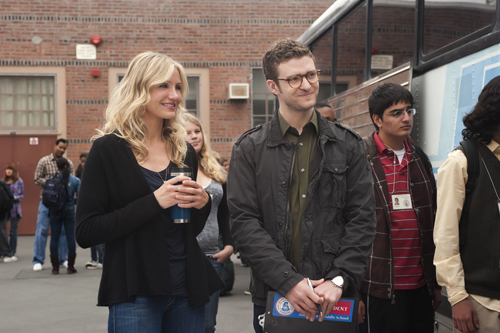
Recent Comments